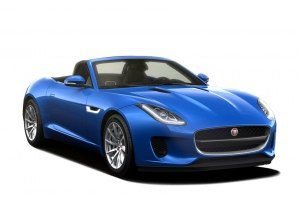
Location of vehicles on the road
11.1
The number of lanes on the carriageway for the movement of non-rail vehicles is determined by road markings or road signs 5.16, 5.17.1, 5.17.2, and in their absence, by the drivers themselves, taking into account the width of the carriageway of the corresponding direction of movement, the dimensions of the vehicles and the safe intervals between them .
11.2
On roads with two or more lanes for driving in the same direction, non-rail vehicles should move as close to the right edge of the carriageway as possible, unless there is an advance, detour or lane change before turning left or turning.
11.3
On two-way roads with one lane for traffic in each direction, in the absence of a solid road marking line or corresponding traffic signs, going to the oncoming lane is only possible to overtake and avoid an obstacle or stop or park at the left edge of the carriageway in settlements in permitted cases, while oncoming drivers have an advantage.
11.4
On two-way roads with at least two lanes for driving in one direction, it is forbidden to leave on the side of the road intended for oncoming traffic.
11.5
On roads with two or more lanes for driving in one direction, exit to the leftmost lane for traffic in the same direction is allowed if the right ones are busy, as well as for turning left, turning or for stopping or parking on the left side of a one-way road in settlements, if this does not contradict the rules of stopping (parking).
11.6
On roads with three or more lanes for driving in one direction, trucks with a maximum permissible weight of more than 3,5 tons, tractors, self-propelled vehicles and mechanisms are allowed to go to the far left lane only for turning left and turning, and in settlements roads with one-way traffic, in addition, for stopping on the left, in permitted cases, for the purpose of loading or unloading.
11.7
Vehicles whose speed should not exceed 40 km / h or which for technical reasons cannot reach such a speed should move as close to the right edge of the carriageway as possible, unless overtaking, bypassing or changing lanes before turning left or turning .
11.8
On a tram track of a passing direction, located at the same level as the carriageway for non-rail vehicles, traffic is permitted provided that it is not prohibited by road signs or road markings, as well as during the lead, detour, when the width of the carriageway is insufficient to complete the detour, without going on a tram track.
At an intersection, it is allowed to enter the tram track of the same direction in the same cases, but provided that there are no road signs 5.16, 5.17.1,, 5.17.2, 5.18, 5.19 in front of the intersection.
A left turn or a U-turn must be carried out from a tramway track in the same direction, located on the same level with the carriageway for non-rail vehicles, unless a different traffic order is provided for by road signs 5.16, 5.18 or markings 1.18.
In all cases, there should be no obstacles to the movement of the tram.
11.9
It is forbidden to go on the tram track of the oncoming direction, tram tracks and a dividing strip separated from the carriageway.
11.10
On roads, the carriageway of which is divided into lanes by road marking lines, it is forbidden to move, occupying two lanes simultaneously. Run into broken lines of marking is allowed only during rebuilding.
11.11
With heavy traffic, changing the lane is only allowed to bypass an obstacle, turn, turn or stop.
11.12
A driver who makes a turn onto a road having a lane for reversing traffic may change its lane only after passing through a reverse traffic light with a signal permitting movement, and if this does not contradict paragraphs 11.2, 11.5 and 11.6 of these Rules.
11.13
It is forbidden to move vehicles along sidewalks and footpaths, unless they are used to perform work or service commercial and other enterprises located directly next to these sidewalks or paths, in the absence of other entrances and subject to the requirements of paragraphs 26.1, 26.2 and 26.3 of these Of the rules.
11.14
Driving on the roadway on bicycles, mopeds, horse-drawn carts (sleighs) and riders is allowed only in one row in the right extreme lane as far as possible to the right, except when a detour is performed. Turning left and turning are allowed on roads with one lane for traffic in each direction and without a tramway in the middle. Driving on the side of the road is permitted if this does not create obstacles for pedestrians.

